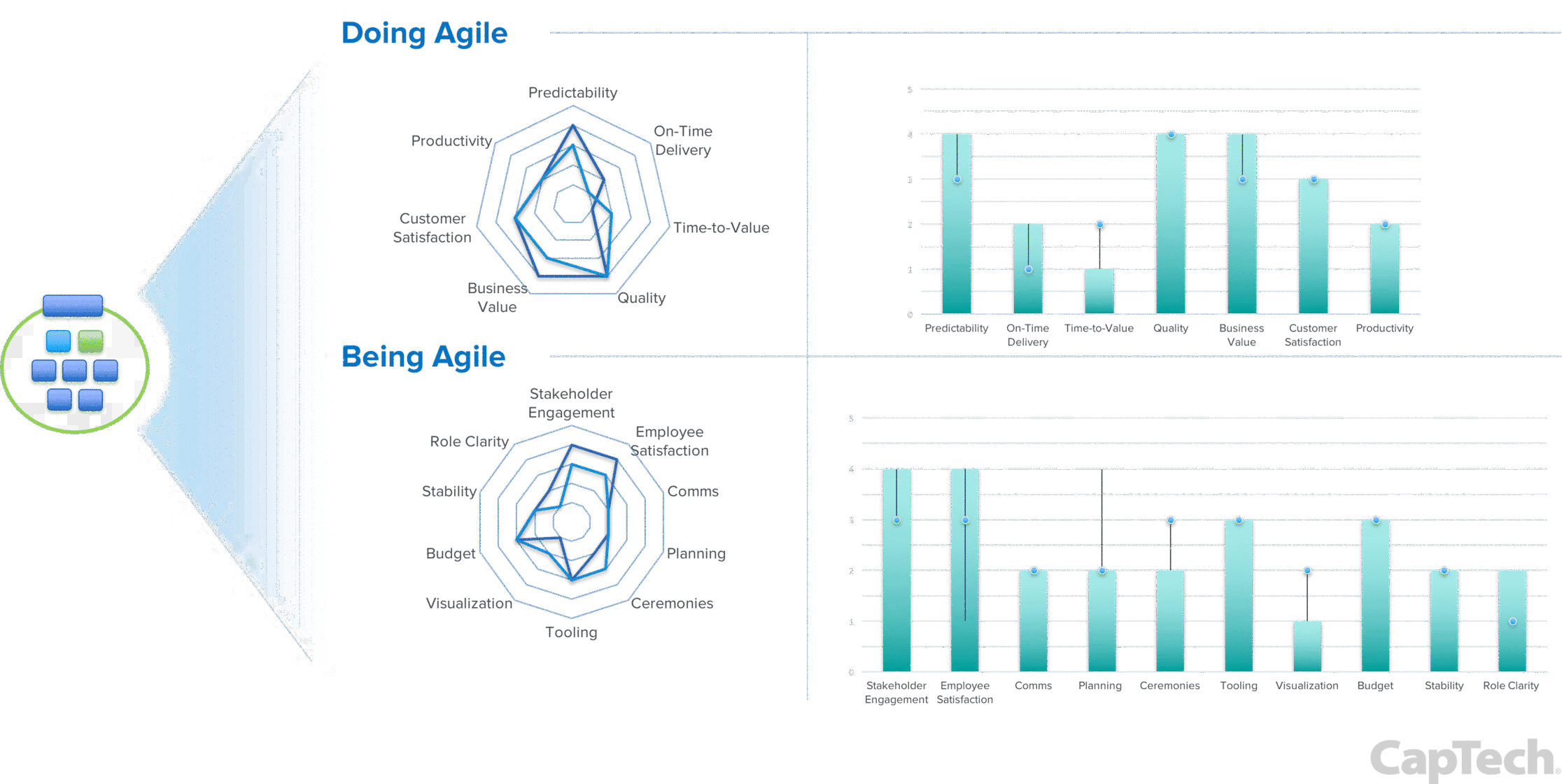Blog May 31, 2017
Measuring Progress On Your Agile Journey

- Topics
- Agile
Nearly every organization that undertakes an agile journey eventually runs into these questions: How do we measure progress? And how do we justify our activities and budget to the executive team?
The need to answer these questions has led many organizations to adopt agile-assessment models that assign an overall agile proficiency level (for example, 1 to 4). This resonates with many, and gives organizations that are beginning their transformation specific steps to work toward. I often think of it as the gamer model: the better you are, the more milestones you reach, until you reach the highest level possible. Mastery! Several consulting firms and agile regulatory groups have developed assessment models that can provide these types of measures of agile teams, organizations and maturity levels. The problem is that this approach is of little practical value once you have progressed past those first steps.
It is true that being assigned to, say, Level 3 or 4 may give you something encouraging to tell the executive team. It may also make team members feel they are progressing on the agile journey. But it doesn't help you succeed on the journey. That's because success is about delivering business value and return on investment, not about achieving a rating or level of proficiency.
When clients ask me how to measure agile progress, I recommend that they look at specific aspects of how they are being agile and doing agile; determine where they need improvement; and then make positive changes in those areas that will deliver the greatest business value and the greatest ROI.
- Transformation or "Being agile" is about the mindset within the company. It involves changing internal processes and ensuring that, as a group, you maintain a high level of energy and excitement about the changes. Effectiveness here will help you increase agile adoption as well as the likelihood of long-term success. You can measure maturity in this area by assessing such factors as stability, communication, visualization and stakeholder engagement.
- Performance or "Doing agile" is about how well you are performing in the environment, rather than how well you are changing the mindset within the company. In many cases, measuring this will involve more quantitative factors such as predictability, on-time delivery and business-customer satisfaction.
The objective of taking measurements in these two areas is to help your teams and organization improve. We want to develop a snapshot of where you are today and where you have the most opportunity for improvement. With this information, you can make improvements within areas that will deliver a clear payoff, instead of spending your time, energy and budget on the attainment of an overall agile rating that doesn't relate to business needs. Chase the ROI.
A starting Point for measuring your progress
With that in mind, several of my colleagues, peers, and fellow agilists have collaborated to develop a rough approach to measuring agile maturity, which we're making available as a starting point for others. Within this tool, you'll find two sets of measurements, one that covers key aspects or attributes of being agile and one that covers key aspects or attributes of doing agile.

In the being agile category, you'll find that communication, for example, is assessed by looking at such factors as ceremonies, information flow, information radiation, agile practices and understanding. In the doing agile category, you'll find that predictability, for example, is assessed by looking at velocity trend. This shows, over a three- to four-month period, the average amount of work completed at a sustainable pace.
Not every business will want to assess the same factors! Additionally, it's likely that what you focus on will change over time, reflecting shifting business priorities. Given that, I strongly encourage you to customize the categories for your own use.
Again, the objective is not to work toward achieving some overall score that will suggest that you are steadily marching toward the agile promised land. No matter how good you are, there will always be room for improvement and there will always be shifting business priorities. The idea is to undergo a regular check-up that identifies opportunities for improvement in areas that will deliver a meaningful return on investment and meet real business needs.

